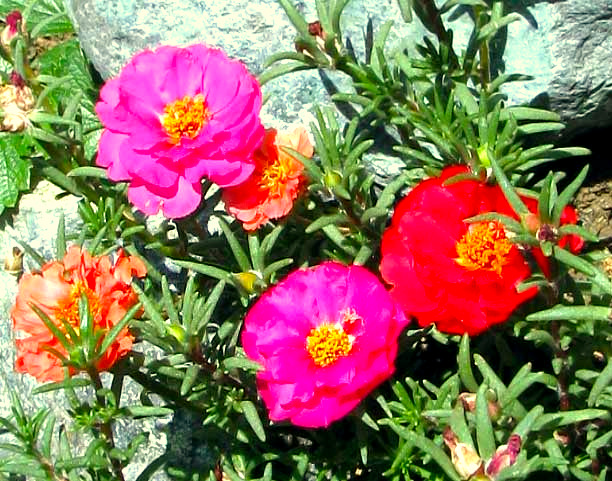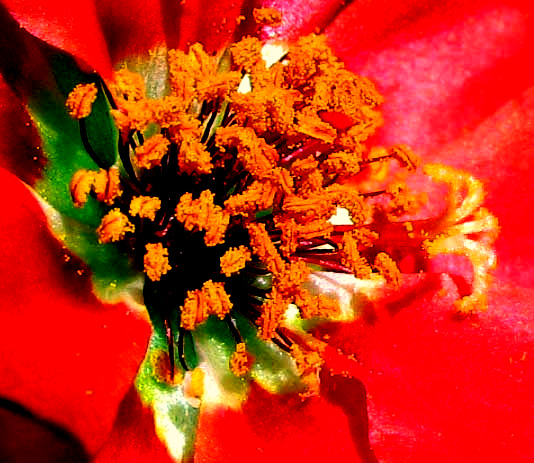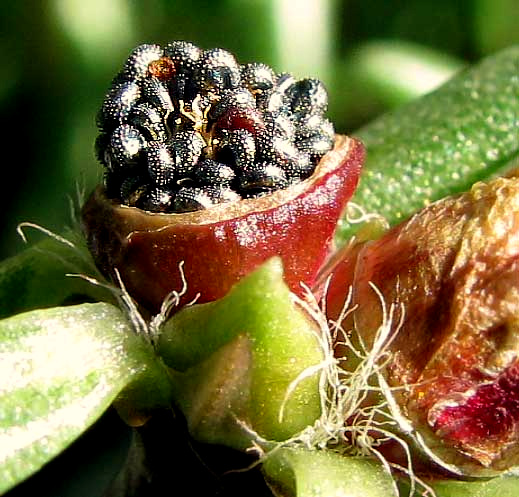Excerpts from Jim Conrad's
Naturalist Newsletter

from the the August 9, 2009 Newsletter, issued from the Siskiyou Mountains west of Grants Pass, Oregon:
PORTULACA'S BOWL OF JEWEL-LIKE SEEDS
The Portulacas, or Rose-Mosses, PORTULACA GRANDIFLORA, in Anita's pretty, serpentine-rock-garden are flowering very prettily now.

The above close-up shows a flower's bunch of stamens consisting of orange, pollen-releasing anthers atop slender, stiff, dark-purple filaments, with the several-parted style looking like a star-burst at the far right, each style branch ending in a fuzzy stigmatic zone where pollen grains are supposed to germinate. The style branches unite and lead down to the oval ovary hidden by the stamens.
Once ovules inside the ovary are fertilized by the male sex germs, the corolla dries up and shrivels as the ovary grows to approximately the size of a pea. When the shriveled corolla falls off, the ovary remains, now a mature, capsule-type fruit. And there's something amazing about that fruit: It looks like a can opener has cut a slit around its circumference. Instead of splitting lengthwise like normal splitting-open fruits, in the genus Portulaca they split around its middle, as shown in the picture below:

The red "bowl" there is the bottom of the ovary. The white rim is scar tissue where the top half has come off. And the bowl is filled with shiny, finely ornamented, jewel-like, black seeds.
Pods that split around their middles like this are said to be "circumscissile." A more elegant way of offering up seeds to be scattered in a world of hard knocks and big raindrops which splash such seeds all over the place can hardly be imagined.